#erick colon packs
Text
sabina hidalgo+erick (cnco)
briandhidalgo
sabinacolon
hidalgoericks
sabianderick
erickhidalgos
(c) @favsdathai
eu faço divulgação de produtos da shopee, caso vocês se interessem vou deixar o link aqui embaixo
link
I promote shopee's products, in case you are interested I will leave the link below
link
GANHE R$10,00 de desconto na shein além de cupons e pontos. Vá em "perfil" e "minha indicação" e coloque o código: BR08005Y válido para compras acima de R$200
WIN $10 off at shein in addition to coupons and points. Go to "profile" and "my referral" and enter the code: BR08005Y valid for purchases over $200
#sabina hidalgo#erick#cnco#sabina hidalgo users#users sabina hidalgo#erick brian colon#cnco users#cnco headers#cnco user#cnco icons#sabina hidalgo user#user sabina hidalgo#sabina hidalgo packs#sabina hidalgo icons#icons sabina hidalgo#sabian hidalgo header#sabina hidalgo twitter packs#user#users#random users#cute user#username#usernames#username twitter#twitter username
5 notes
·
View notes
Text
First photos of cougars killing donkeys in Death Valley suggest big impacts for ecosystem | Science

For humans and wildlife alike, feral donkeys can be a pain in the ass. Large and full of attitude, the scruffy vegetation-destroying equids steal resources from native sheep and tortoises, poop in precious spring water, and cost many a park manager a good night’s sleep.
They aren’t unstoppable, however. In Death Valley National Park, researchers have captured the first photographic evidence of donkeys falling prey to the claws of a native predator: the cougar. The relationship is shaping the area’s wetlands, the team argues, and has raised questions about the management of wild equids going forward.
“This is cool stuff,” says wildlife biologist Kate Schoenecker of the Fort Collins Science Center who studies cougar predation on wild horses but was not involved with the research. “It’s helping us understand the effect these interactions with [wild equids] have on the North American landscape.”
Donkeys, often called burros in the Americas, first arrived with Spanish colonizers in the 1500s. They became invaluable as pack animals and mine workers for Western pioneers in the 1800s. At the end of the mining boom, however, most burros escaped or were turned loose.
Able to tolerate tough desert conditions, the abandoned animals quickly established feral populations in Arizona and Southern California. Although the exact numbers are disputed, the Bureau of Land Management estimates the wild burro population at about 17,000 individuals—much smaller and more localized than the wild horse population of more than 60,000. As a result, the animals attract less mainstream attention, says ecologist Erick Lundgren of Aarhus University, who led the new study. “Donkeys are the forgotten little desert guy,” he says. “They’re easily overlooked.”
The animals don’t get much respect from the U.S. National Park Service either. Because burros are considered a nuisance for eating and trampling delicate vegetation, polluting water, and preventing other creatures from using springs, the agency strictly manages the population in Death Valley, where many of them live, by capturing them and sending them to animal rescue organizations for adoption. It eventually plans to remove all donkeys from the park. Part of the reason for this management was a general consensus that, like other invasive species, the donkeys have no natural predators to keep them in check.
Some ecologists and park staff in Death Valley have found evidence suggesting otherwise: sightings of cougars eating donkey carcasses, or carcasses stashed near cougar trails or scat. However, Lundgren says that without concrete proof, many other scientists have dismissed the idea.
Lundgren, who did his master’s degree at Arizona State University, Tempe, and had long been fascinated with feral equids, thought the cougars were indeed preying on donkeys and wanted to prove it. He and colleagues set up camera traps across cougar territories in Arizona and California to monitor cougar and donkey activity. Then, he crossed his fingers and waited.
One day in 2019, he found more than he bargained for. One camera had slipped so it faced the ground, collecting thousands of useless images of dirt. But as Lundgren prepared to delete the images, an odd shape in the corner of one photo caught his eye.
Lundgren realized he was seeing a cougar and a burro caught midstruggle as the cougar wrestled the donkey to the ground. With one eye closed, the bloody cat seemed to be staring straight into the camera as its powerful front paws coiled around the burro’s forehead. The following year, Lundgren caught another cougar killing a burro on camera, this time at night. The camera had captured the entire sequence, from the cougar latching onto the panicked burro’s haunches to the triumphant cat standing over its dead prey.
“Capturing that kill on camera was a great moment of validation,” Lundgren says. Immediately, his mind went to trophic cascades, phenomena in which a single type of predator hunting a certain prey animal can affect an entire ecosystem, down to the smallest blade of grass. Wolves famously have this effect in Yellowstone; by hunting elk, they prevent overgrazing on delicate saplings and allow other species such as beavers to access more resources. This change is only partially accomplished through predation itself: Once predators enter a landscape, prey learn to fear the places their brethren have been killed and spend less time grazing in those areas. Lundgren had long suspected cougars could be having a similar impact by hunting burros.

A wild burro in the Butte Valley of Death Valley National ParkMichael Alfuso
To explore his theory, he headed to Death Valley, one of the few places where wild donkeys live and cougars are protected. Given the park’s name, it’s easy to imagine it as a dry, lifeless desert, Lundgren says, but deep inside, the land is pocked by springs and wetlands. These wetlands are a magnet for thirsty donkeys, which made them an ideal place for Lundgren to conduct his research. In all, he and his team monitored 14 wetland sites.
In the five sites where cougars were absent, likely because they were close to human campsites that would scare the big cats away, the donkeys hung around for an average of 5.5 hours at a time during hot days. However, in the sites where cougars were present, donkeys stayed for an average of only 40 minutes at a time, and didn’t stick around much at night, when cougars hunt more often.
The vegetation in sites less frequented by donkeys had more plants growing and fewer signs of trampling. By making donkeys more wary of wetland sites, the cougars were promoting a greener and healthier landscape, Lundgren and his colleagues reported last week in the Journal of Animal Ecology.
To Lundgren, this relationship between cougars, donkeys, and vegetation suggests the burros are not a blight on Death Valley’s landscape and shouldn’t be entirely removed. With cougars keeping donkeys from destroying wetlands, he says donkeys’ beneficial behaviors have a better chance to shine through.
For instance, Lundgren’s ongoing research has shown that by clearing the vegetation around the valley’s springs, the equids were keeping the pools from drying out and allowing endangered fish there to survive. Furthermore, with no burros to hunt, he thinks cougars would disperse elsewhere or turn to bighorn sheep, the park’s native midsize herbivore, which is already vulnerable to climate change and disease.
The evidence that cougars hunt donkeys and influence their behavior is strong, says Mark Boyce, an ecologist at the University of Alberta, Edmonton, who has worked with cougars and trophic cascades. But he doesn’t think this knowledge should affect burro management. “This is an invasive exotic species,” he says. “It would be a serious mistake to conclude that because cougars kill donkeys, we do not need to remove donkeys.”
Schoenecker agrees. Donkeys, like horses, are a domesticated species, she notes, so they’ve been artificially selected over thousands of years to reproduce more often than untamed herbivores such as bighorn sheep. Cougar predation, she argues, isn’t enough to manage them.
Abby Wines, a management analyst at Death Valley National Park, says the new study won’t change the park’s goal of removing donkeys. Any ecological boons the burros provide, such as clearing unwanted vegetation, can also be done by the park staff, she states.
Despite her concerns, Schoenecker believes the new study is an exciting starting point for future research and continues the often-difficult conversation on controlling feral domesticated animals. “It’s really interesting and helpful to see their data,” she says. “It certainly makes you want to go out and test more of these things, and that’s a good thing.”
New post published on: https://livescience.tech/2022/08/02/first-photos-of-cougars-killing-donkeys-in-death-valley-suggest-big-impacts-for-ecosystem-science/
0 notes
Text






Erick Brian Colón packs.
Headers are not mine.
Like if you save/use.
#cnco layouts#cnco packs#cnco#cnco icons#erick brian colon#erick brian colon icons#erick brian colon packs#erick brian colon layouts#erick colon#erick colon icons#erick colon packs#erick colon layouts#headers#icons#packs#layouts#icons with psd
75 notes
·
View notes
Text





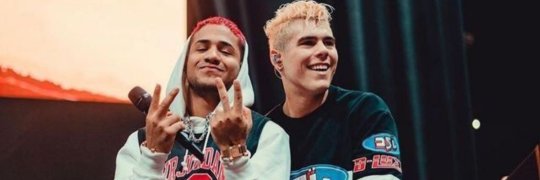




ೃ⁀➷ cnco header's
☘️| reblog and like if you liked or saved
#cnco headers#cnco pack#cnco icons#cnco#cncomusic#cnco fandom#cnco nueva era#cnco zabdiel#cnco smut#cnco chris#cnco richard#cnco erick#erick brian header#erick brian colon icons#erick brian colon#richard camacho header#icon richard camacho#richard camacho#icon zabdiel de jesus#zabdiel de jesus header#zabdiel de jesus#christopher velez headers#icons christopher velez#christopher velez#4ever#4EVER CNCO
30 notes
·
View notes
Text
cnco messy headers + icons girls random










fav ou reblogue se salvar!
pedidos abertos no ask <3
#cnco#erick brian colon#erick brian colon cnco#erick brian colon headers#erick brian colon packs#cnco packs#cnco headers#cnco layouts#cnco icons#cnco erick brian colon#icons girls random#site model random#site model layouts#icon girls#packs#layouts#erick brian colon icons#icons#cnco messy headers#zabdiel de jesus#zabdiel de jesus cnco#zabdiel de jesus packs#zabdiel de jesus layouts#richard camacho#richard camacho cnco#richard camacho packs#richard camacho icons#richard camacho headers#richard camacho layouts#christopher velez
54 notes
·
View notes
Note
Você pode fazer uma header do cnco estilo vintage que combine com esse icon ?





done!
sabrina carpenter icons & cnco messy headers
reblog if u save and credit on twitter @cneliastreet
#sabrina carpenter#sabrina carpenter headers#sabrina carpenter icons#sabrina carpenter layouts#sabrina carpenter packs#cnco#cnco icons#cnco headers#cnco packs#cnco fandom#christopher velez#joel pimentel#erick brian colon#richard camacho#zabdiel de jesus
54 notes
·
View notes
Text










CHRISERICK AND ANGEL 22 PACKS
• like and reblog if you save
#angel 22 pack#angel 22#cnco headers#christopher velez#cnco#cnco packs#erick brian colon#sofia oliveira#sofia oliveira icons#wendi icons#wendi sarmiento icons#wendii sarmiento#erick brian colon icons#Christopher velez icons#cnco messy headers#headers cnco#cncomusic#angel 22 messy headers#angel messy headers#angel 22 icons
43 notes
·
View notes
Text

mi rayito de luz <3
9 notes
·
View notes
Text
Cnco + Why don't we Packs
© @louvcolon
like or reblog if you save.
@llotuseavey on twitter






#icons#twitter#twitter icons#headers#messy headers#why dont we#why dont we icons#why dont we packs#why don't we headers#cncomusic#cnco edit#cnco icons#cnco headers#cnco packs#jack avery#erick colon
25 notes
·
View notes
Text
➱ CNCO icons.




• like or reblog if you save please!!
#latin edits#latin pack#cnco#cnco fandom#cnco icons#cnco headers#cnco zabdiel#christopher velez#cncomusic#cnco erick#erick brian colon#cnco richard#cncowners#cnco nueva era#cnco club tour#latin boyband#boyband#latinmusic#music
8 notes
·
View notes
Text
cnco icons
like or credit @bestpimentel and @ERICKBR1AN on twitter








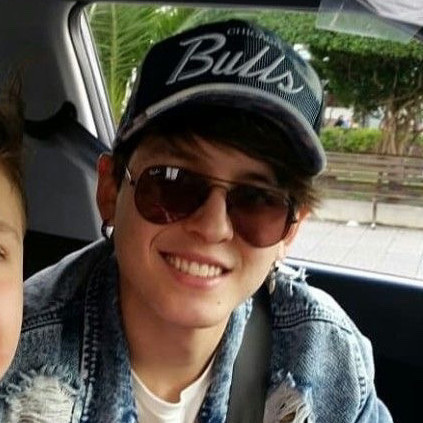

#cnco packs#cnco headers#cnco new era#cnco icons#erick brian colon icon#erick brian colon#joel pimentel icon#joel pimentel icons#joel pimentel#zabdiel de jesus icon#zabdiel de jesus#richard camacho icon#richard camacho icons#richard camacho#icons without psd#icons without filter#men icons
57 notes
·
View notes
Photo










Camila Cabello + Erick Colon (CNCO) layouts
erick icons & headers: cncopsd
1th and 2th camila headers aren’t mine, credits to those who have done them
- don’t steal
- like/reblog if you use/save
#camila cabello#camila cabello icons#icons camila cabello#camila cabello headers#headers camila cabello#camila cabello layouts#layouts camila cabello#camila cabello packs#packs camila cabello#erick colon#erick colon icons#icons erick colon#erick colon headers#headers erick colon#erick colon layouts#layouts erick colon#erick colon packs#cnco#cnco icons#cnco headers#cnco layouts#cnco packs
25 notes
·
View notes
Note
pode fazer users do zayn e erick (cnco)?
erick (cnco) + zayn users (ask)
brianwtables
erickoutsidrr
sweatcolon
zjmerick
jwaddcolons
icaruscolons
ericarusfalls
ERICKTSIDERR
letmericks
nobodyiscolon
colonfucktables
#ask me anything#zayn photoshoot#zayn jawaad malik#zayn malik icons#zayn gifs#zayn lockscreens#zayn packs#zayn headers#icons zayn#erick brian colon#erick brian colón icons#icons erick brian cólon#zayn users#cnco icons#cncomusic#icons cnco#headers nobody is listening#nobody is listening#headers zayn malik
26 notes
·
View notes
Text





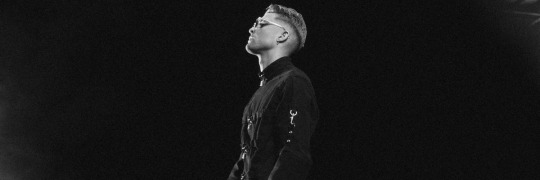

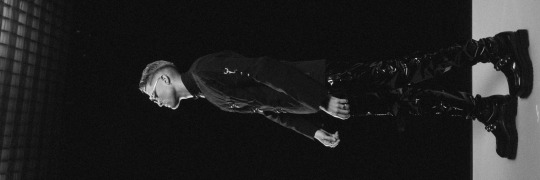


ೃ⁀➷ Erick Brian headers
☘️| reblog and like if you liked or saved
#cnco headers#cnco pack#cnco icons#cnco#cncomusic#cnco fandom#cnco nueva era#cnco erick#erick brian colon icons#erick brian colon#erick brian header
26 notes
·
View notes
Text
Icons cnco.
Rt y like si te gusto el contenido




#cnco#icons#icons cnco#christopher velez#Richard camacho#zabdiel de jesus#erick brian colon#icons erick Brian colon#icons zabdiel de jesus#icons christopher velez#packs cnco#icons richard camacho
9 notes
·
View notes
Text




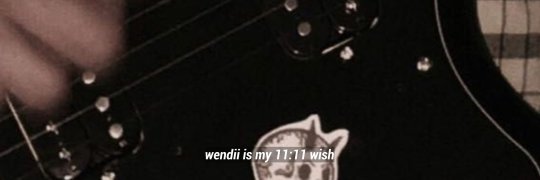

WENDI AND ERICK BRIAN PACKS
• Like and reblog
#angel 22 messy headers#angel messy headers#angel 22 icons#angel 22 pack#angel 22#cnco headers#cnco#cnco packs#erick brian colon#wendi sarmiento icons#wendii sarmiento
19 notes
·
View notes